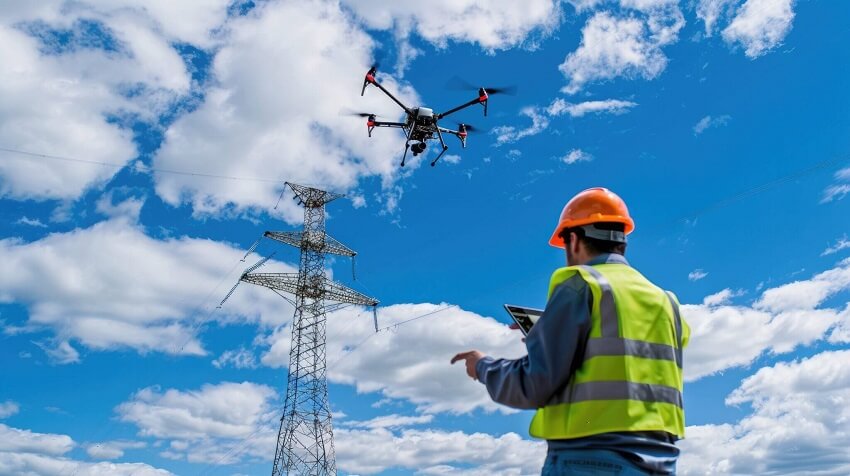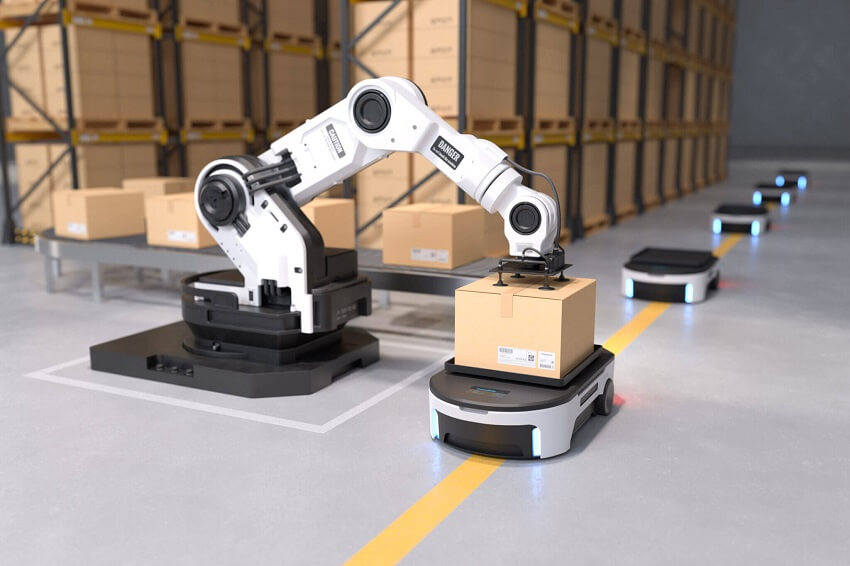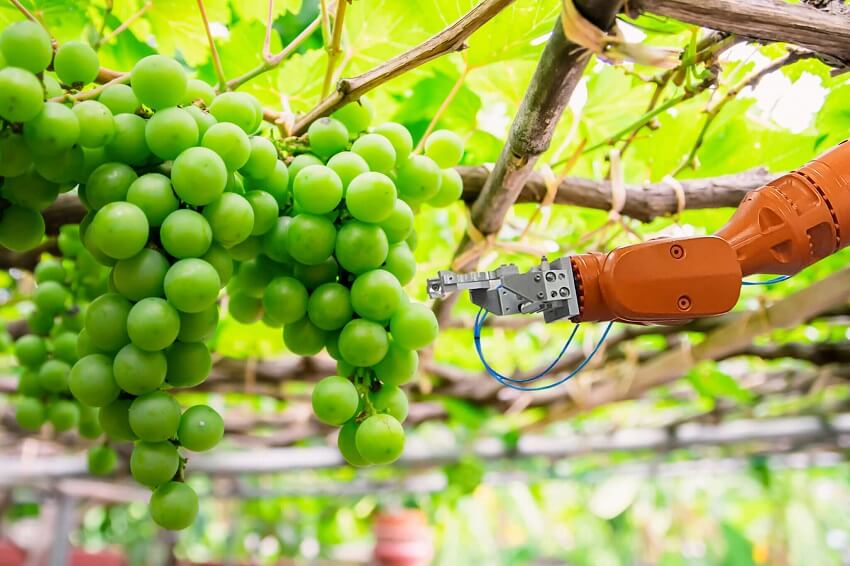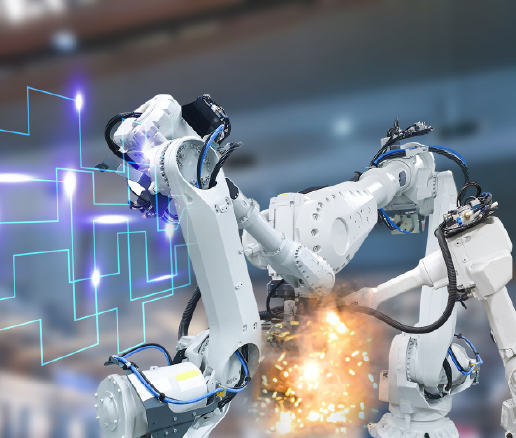How cellular enabled robots drive transformation across industries
by Nir Elron
According to the International Federation of Robotics, global average robot density hit an all-time high of 151 robots per 10,000 employees and more than doubled in the last six years. Demand for industrial robots is high, global installations are forecast to grow, and there is no indication that the overall long term growth trend will come to an end any time soon. The mark of 600,000 units installed per year worldwide is 2024.
Along with the surge in e-commerce and logistics demands, one of the reasons for this increased installation rate is rising labor costs and workforce shortages. The world’s population is aging. According to independent studies, Japan may face a shortage of more than 11 million workers by 2040, as its population ages rapidly. In the U.S., more than 2.1 million manufacturing jobs will be unfilled by 2030. More than half of Germany’s companies say they are struggling to fill vacancies due to a lack of skilled workers. Meanwhile, people available for work are increasingly rejecting intensive manual jobs. For many companies, there is an urgent need to bridge these labor gaps, and that’s where robotic technology can help.
However, implementing it is a complex endeavor. Technically, modern robots can be considered advanced IoT devices, some people even refer to them as parts of IoRT – Internet of Robotic Things, a concept that combines IoT with robotics. And like all IoT devices, they can’t function without a reliable internet connection. Some robots need remote control functions, some send vast amounts of sensor data to the cloud for processing and analysis, while some need connectivity for over-the-air firmware updates and remote diagnostics.
Robots are classified according to different criteria, from industry application to their mechanical structure. One of the basic approaches is dividing them by level of mobility: stationary, such as articulated robots or robotic arms, automated guided vehicles (AGVs) which are remotely controlled like drones, and autonomous mobile robots, capable of moving on their own and making decisions in real-time.
In a brief analysis of industrial use cases, we’ll see how cellular connectivity is critically important for all of them, even for fixed robots that can, and in most cases do, use wired connections.
Also worth noting is that it’s not necessary to become IoRT experts to leverage robotics. Robot-as-a-service (RaaS) companies lease robotic devices to enterprises that do not have the know-how or in-house resources to maintain such solutions, helping them use all the benefits of robotic process automation. There are many examples of this business model applications across various industries: autonomous commercial lawnmowers and forklifts or robotic sealcoat vehicles oftentimes are not owned by the companies that use them.
When RaaS companies deploy the service at their clients’ premises, they need to extract robot logs, perform remote software and firmware updates and gather insights about the robot’s operations. Since the robots most likely will not use the clients’ networks to transfer all these data for many reasons, including safety, complexity and viability, cellular connectivity is the easiest, if not the only way to keep them operational.

Energy & Grid
In the energy sector, cellular-connected robots are widely used for monitoring infrastructure and processes. Some are lightweight robots that travel along power lines, detect and report issues. Others are heavier machines equipped with cameras and sensors and capable of walking along cable tunnels inspecting and relaying metrics such as gas concentrations, humidity and temperature. Many companies, like National Grid, use serial Boston Dynamics robodogs to perform routine maintenance and inspections at HVDC converter station. Unlike human engineers, the robot can reach certain hard-to-access areas and, which is probably more important, is able to work on operational assets, eliminating dead zones and significantly improving safety.
In all these use cases cellular connectivity provides two critical functions: remote control and transmission of data from multiple cameras and sensors that robots have.
Oil & Gas
Oil and gas companies have been using robots for decades. The upstream segment has utilized them for drilling and searching for new oil and gas fields, particularly in inaccessible environments. Downstream has used robotics in material handling, repair and refuelling. In midstream they are used for inspection, maintenance and remote monitoring.
Due to similarities between the two industries, such as extensive critical infrastructure and oftentimes dangerous environment, oil and gas use cases can be very similar to energy ones. Moreover, the same types of robots are used: at an LNG facility in Australia, similar robodogs conduct routine inspections to confirm equipment is in good operating condition and reduce the exposure of operators to potential hazards.
As in the energy sector, the utilization of robots controlled over cellular networks allows to save time and manpower. Some enterprises even aim to completely remove human workers from certain facilities. For example, 4G-enabled robots onboard the TotalEnergies’ Pazflor floating production unit 90 miles off the coast of Angola are capable of executing 96% of inspection tasks.
Manufacturing
Smart factories install many different types of robots, both stationary and mobile. There are robotic arms and automated guided vehicles (AGVs) that transport goods or materials, and sometimes fully autonomous robots.
Cellular connectivity can be particularly beneficial for large production sites with robots moving between different locations, because it can guarantee coverage both inside and outside of buildings and low latency to ensure real-time data transfer. Surprisingly, even fixed and wired robotic arms may need cellular connectivity, since workers use their smartphones to start and control production processes.

Logistics
Modern warehouses use robotic technology quite a lot. There are robots that find and pick goods from the shelves, autonomous forklifts that move pallets from loading docks to storage racks, and self-driving trucks delivering freights from a manufacturing plant to a warehouse.
Just like in manufacturing, cellular networks can help logistics operators ensure they have a strong, high-speed and secure internet connection that can keep their robots running even if the power goes out or the facility is targeted in a cyberattack. They can also provide a steadier connection than Wi-Fi for large buildings and for autonomous trucks, particularly in remote locations.
Healthcare
Robotic surgical systems have been developed and used for over 40 years. There are highly complex surgical robots that can either aid a human surgeon or even execute operations by themselves: certain orthopedic procedures including knee and hip replacements are sometimes carried out robotically. In addition to surgery, robots are used in hospitals and labs for repetitive tasks, in rehabilitation, physical therapy and in support of patients with long-term conditions.
Cellular connectivity is critical for many use cases in healthcare. It enables autonomous and remote-controlled robots to perform even cross-border surgeries, and is particularly useful in remote patient monitoring, as the low-latency connection allows physicians to monitor health metric data in real-time.
Agriculture
Robots working on the farms gradually become as usual as drones spraying crops. They can be used for a wide range of tasks, from hoeing, seeding, weeding, plucking and mowing to picking fruits and vegetables.
Autonomous robots can’t work without stable connectivity with sufficient bandwidth. Since they also must move about the crop fields freely, cellular networks seem to be a perfect fit for them. Besides, with agricultural robots working in remote locations, cellular simply may be the only connectivity option.

Connectivity Requirements
Aside from the industries mentioned above, there is a wide variety of other applications for cellular-enabled mobile robots: they help ensure security like police robodogs, clean rivers and even explore the moon. Basically, cellular connectivity allows for real-time remote control, enables operators to receive alerts, and ensures overall smooth robot operations. Their connectivity requirements may be somewhat different depending on the use case, location, type and amount of data to be transmitted. In certain cases, there can also be additional conditions such as compliance with local regulations for global deployments. However, there are common demands that are important for most scenarios.
Coverage
Coverage is crucial for any robot use case, regardless of application. While the loss of connectivity poses a greater threat in the case of a robot performing surgery, it can ruin any other process just as well. That’s why many enterprises opt to set up a private network for use cases in locations where network coverage may be spotty.
Bandwidth
Bandwidth is a critical criterion in all usage scenarios with robots equipped with cameras and sensors that transmit a lot of data. This is especially important for robots performing asset inspections in hard-to access areas or diagnostics of critical infrastructure.
Latency
Latency is one of the most important connectivity parameters for autonomous robots, since it defines their ability to adapt to changing conditions. It is crucial for safety inspections, for in many industrial facilities a fraction of a second delay in detection of a threat may have catastrophic consequences. It is also important to remember that actual latency depends on the architecture of mobile operators’ core network and therefore may vary.
Remote Management
Robots, especially the ones deployed in remote locations, may need advanced management capabilities that allow to remotely update, configure, and monitor them. This requirement can be key for some use cases because manually handling robots at an offshore platform can be costly both in terms of time and expenses.

Webbing’s Solution
Webbing offers a connectivity solution that ensures global access to reliable and high-quality internet, with low latency and the best of class coverage. It provides secure and continuous internet connection for robotic devices, wherever they need it.
Webbing’s partner network of over 600 mobile operators worldwide guarantees global coverage. It allows to roam on several carriers’ network in every region, solving the problem of weak spots that any mobile network may have and ensuring full coverage and continuous connectivity even at remote locations.
Webbing is a global connectivity provider with a distributed full core network with local breakouts, multiple network solution, and data server redundancy that provides connectivity stability and low latency. As such, Webbing’s network is well suited to support mission-critical, high-data consumption type of use cases. It also allows for compliance with all types of connectivity regulations.
Our eSIM solution ensures failover connectivity with the capability of using multiple mobile carrier profiles, easily changing carriers at any time with zero integration, and an option to fall back from a failing profile to a different profile without any need to communicate with a remote server or deal with multiple SIM cards.
A flexible approach to data packages allows us to tailor our connectivity offering for every customer based on the type of connected devices and their data consumption needs as well as the locations where the devices are used, aiming at overall optimization of the total cost of operations for the client.
Our solutions help enterprises overcome their connectivity challenges and optimize costs for global deployments, providing the benefits of roaming with multiple carrier options in every country, and seamless transition between carriers, while maintaining low rates and low latency on a global scale with a single SIM.
Reach out to [email protected] to learn more about Webbing’s solutions.




